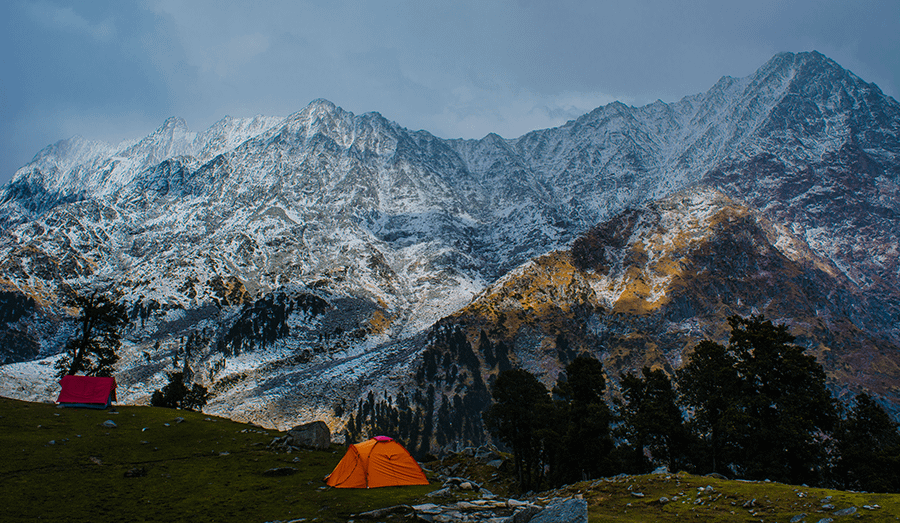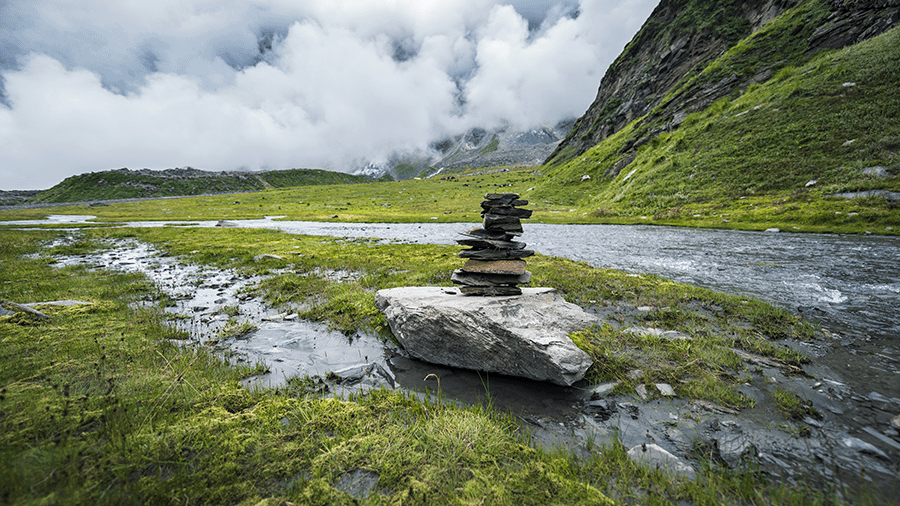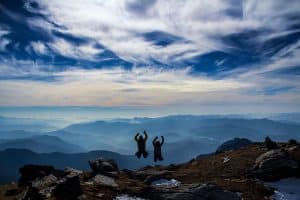Best Himalayan Treks in September
1. Har Ki Doon Trek

- Maximum Altitude – 3550m/11650ft
- Region – Garhwal (Uttarakhand)
- Grade – Moderate
- Duration – 6N/7D (Ex. Dehradun)
Har Ki Doon Trek, one of my absolute favorites, holds the distinction of being one of the oldest trekking trails in India. Situated in the high altitude region of Garhwal, this valley is a part of the Govind Ballabh Pant National Park. The trek begins from Sankri, serving as the base camp, and typically takes around four days to complete the hike to the valley and back. The most captivating aspect of this valley is its untouched dense forests and the opportunity for riverside camping, providing a delightful experience for nature enthusiasts, bird watchers, and photography enthusiasts. I highly recommend embarking on this trek to the Har Ki Doon valley after the monsoon season, as it is suitable for both experienced trekkers and beginners.
2. Indrahar Pass Trek

- Maximum Altitude – 4342m/14245ft
- Region – Mcleod Ganj (Himachal Pradesh)
- Grade – Moderate
- Duration – 3N/4D (Ex. Mcleod Ganj)
Indrahar Pass is situated at an elevation of over 14000 ft in the Dhauladhar Ranges of Himachal Pradesh. The pass remains snow-covered from October to April, making it challenging to reach the summit. Additionally, the peak monsoon season is not ideal for hiking due to heavy rainfall, leaving only a few months, including September, for trekkers to explore this area. The trek offers breathtaking views of the beautiful landscapes in the Dhauladhar ranges, adorned with dense forests of cedar and rhododendron trees. Along the trek, there is also an opportunity to hike to a glacier called Laka Got.
3. Beas Kund Trek

- Maximum Altitude – 3700m/12140ft
- Region – Manali (Himachal Pradesh)
- Grade – Moderate
- Duration – 2N/3D (Ex. Manali)
Beas Kund, a small lake in the mountains, is the starting point of Beas River which flows through Kullu Valley in Himachal Pradesh. This trek is highly recommended during autumn as the weather is clear and you can see peaks like Friendship Peak, Ladakhi Peak, and Hanuman Tibba. The trail is covered with large rocks, making it a great place for photography. Throughout the trek, you will camp in one of the most beautiful campsites in the Himalayas, which is why this trek is so popular in the region.
4. Valley of Flowers and Hemkund Sahib Trek
- Maximum Altitude – 4600m/15090ft
- Region – Joshimath (Uttarakhand)
- The difficulty level of the grade is easy to moderate.
- Duration – 5N/6D (Ex. Haridwar)
Valley of Flowers is a highly favored trek during the monsoon season and is also renowned as one of the most picturesque destinations in the Himalayas. Situated in the remote Chamoli region, it is an Indian National Park celebrated for its breathtaking meadows and diverse flora. In the monsoon months, numerous rare flower species bloom in this area, transforming the entire valley into a vibrant masterpiece. Another reason for the trek’s popularity is the opportunity to hike to Hemkund Sahib, one of the world’s highest located Gurudwaras. It is recommended to plan this trek in the first half of September to witness the full bloom of these unique flowers.
5. Hampta Pass Trek with Chandratal Lake
- Maximum Altitude – 4270m/14009ft
- Region – Manali (Himachal Pradesh)
- Grade – Moderate
- Duration – 5N/6D (Ex. Manali)
Hampta Pass, situated in the Pir Panjal range, is a highly frequented mountain pass in Himachal Pradesh. Despite being open for only a few months, it serves as a link between Lahaul’s Chandra Valley and the Kullu Valley. This expedition offers the opportunity to stay overnight at stunning campsites in the Himalayas. Another factor contributing to its popularity is its proximity to the beautiful Chandratal Lake, located at an elevation of 4250m and accessible by road. While September generally offers pleasant weather, it is advisable to be prepared for chilly nights.
6. Markha Valley Trek
- Maximum Altitude – 4270m/14009ft
- Region – Ladakh
- Difficulty level – Moderate to Difficult
- Duration – 8N/9D (Ex. Leh)
The Markha River, a tributary of the Zanskar River in Ladakh, originates at the junction of Langtang Chu and Nimaling Chu. The Markha Valley is the name given to the barren land through which the river flows. This trek offers the opportunity to hike through some of the most remote mountain villages in the Himalayas. The trail passes through Hemis National Park, providing a chance to spot rare animal species like the snow leopard. Throughout the trek, there is a breathtaking view of Kang Yatse, one of the highest mountain peaks in the region. Due to the difficulty of this trek, it is recommended to prepare for several weeks before embarking on this expedition.
7. Nag Tibba Trek
- Maximum Altitude – 3050m/10000ft
- Region – Tehri Garhwal (Uttarakhand)
- Grade – Easy
- Duration – 1N/2D (Ex. Dehradun)
Perfect for a weekend getaway in the mountains, the Nag Tibba Trek provides an authentic Himalayan trekking adventure that can be completed in just two days. Those coming from Delhi can conveniently travel overnight to Pantwari village in Tehri and begin the trek in the afternoon. The hike from Pantwari to the Nag Tibba base is relatively easy and can be completed in under four hours. Starting early the next day ensures reaching the summit and returning to Pantwari by three in the afternoon. This brief trek is ideal for beginners and families looking to introduce their children to trekking.
8. Everest Base Camp Trek
- Maximum Altitude – 5500m/18045ft
- Region – Sagarmatha (Nepal)
- Grade – Difficult
- Duration – 13N/14D (Ex. Kathmandu)
Although the Everest Base Camp Trek (EBC) may sound challenging due to its name, it is actually not a difficult trek. Those with some experience in high altitude trekking can plan this expedition after a few months of physical training. One unique aspect of trekking to the EBC is that instead of camping in harsh conditions, you will stay at comfortable tea houses (guesthouses) throughout the journey. In addition to the incredible trekking experience, you will also have an exhilarating time during the adventurous Lukla flight. And, of course, you will have the opportunity to witness some of the highest mountain peaks on Earth, including Mt Everest, Mt Lhotse, and Mt Makalu, among others.
There are plenty of other treks that you can go on during this time but I’ve put together the list basis various factors and a bunch of my experiences. So beat that scepticism and plan that Himalayan trek in September!








